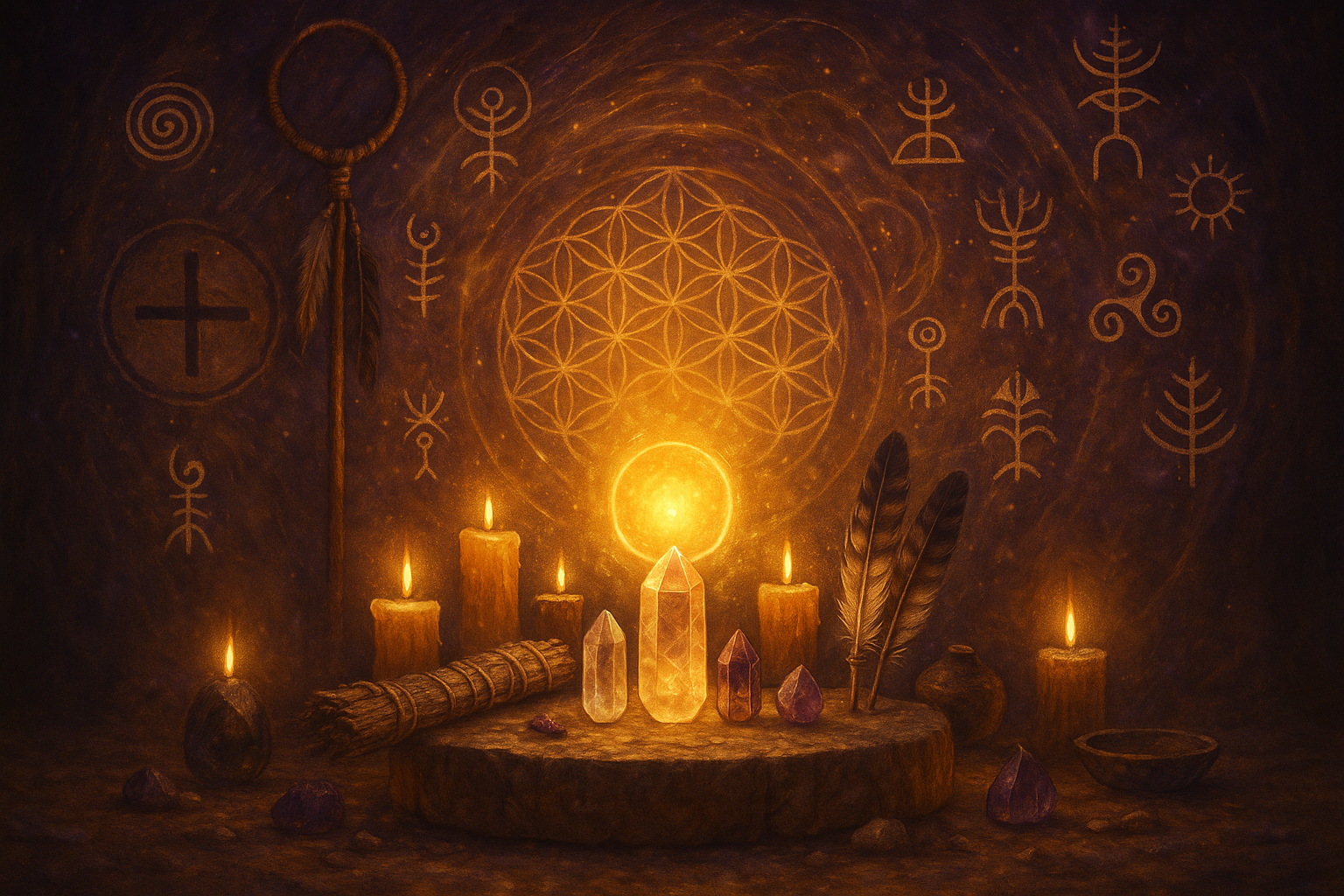
Understanding the Altar: A Shamanic Journey into the Heart of Creation
In shamanic practice, an altar is far more than a physical object—it’s a sacred space where our feet touch the earth, grounding us in the four values of life: earth, water, fire, air. These elements, intrinsic to human existence and the natural world, form the foundation of an altar, a place where we plant a seed of intention or witness the formation of life’s continuity. An altar is not owned by philosophy or religion but is a living connection to creation and divinity. By honoring this space, we remember our purpose, express gratitude, and align with the rhythms of the earth. To create an altar, whether on stone or soil, is to honor the origin and continuity of life, a practice that calls us to be mindful and correct ourselves to live in harmony.
The four values of life—earth, water, fire, air—are the essence of shamanic wisdom, reminding us that everything evolves, and we must redefine our practices to stay connected. These elements are not abstract; they are the body fire, body earth, body water, and body air that sustain us. Yet, humanity often forgets this, oscillating between great and terrible deeds.
Shamanic practice teaches us to exercise discernment, to learn from our spiritual homework even when its purpose isn’t immediately clear. Those with experience—elders, teachers, or shamans—guide us through these transitions, helping us understand how to honor creation and the natural elements. By staying curious and humble, we learn to walk in alignment with the divinity that exists beyond species, embracing the continuity of life.
In shamanic traditions, rituals like using copal or participating in a sweat lodge carry deep significance. For example, copal from the Amazon is revered for its spiritual potency, believed to move energy during pregnancy or menstruation in ceremonies like the smudging ceremony. Yet, shamanic protocols vary—some traditions, like those in India, may not use copal at all, reminding us to respect diverse practices without assuming one is superior.
When engaging in a smudging ceremony with blessing of fire or sacred stones, we must approach with awareness, learning the specific protocols rather than performing for show. Shamanism is not a business; it’s a sacred path that demands we treat others with respect, not as if they lack understanding, but as fellow seekers of spiritual wisdom.
Shamanic learning is a lifelong journey, not a checklist of accomplishments. Whether studying with a shaman for years or encountering a teacher who points out a fox by a water tree, the process requires curiosity and ethical responsibility. The fox, leading to the roots of a tree, symbolizes the natural world as a teacher, guiding us to deeper truths without the need for endless questions. Shamanism is not about authority or a rigid “real world” system—it’s about dismantling outdated structures and learning from nature. Even great artists like Mozart or Picasso were taught foundational skills before innovating, reminding us that self-education in shamanism builds on disciplined learning, not haphazard exploration.
The act of blessing water or engaging in shamanic rituals is not about adding something artificial—water is already blessed and inherently spiritual. Overcomplicating rituals can feel like bad art, lacking authenticity. Instead, shamanism invites us to work with nature, focusing on how we walk in the present moment rather than following a prescribed path. This requires awareness of protocols, avoiding displays of knowledge that flaunt travels or experiences. Every generation seeks respect through learning, but shamanic wisdom teaches us to share opinions thoughtfully, recognizing their value lies in how they’re expressed. By embracing ethical learning, we liberate ourselves and others, honoring the power of water and the natural elements that connect us all.
Ultimately, shamanism is a call to live authentically, rooted in gratitude and respect for creation. An altar, whether a stone in a sweat lodge or the ground beneath our feet, serves as a reference point for honoring life. It’s a reminder that we are all born from the religion of art—the creative pulse of existence—and that learning is a liberating act. By staying open to the teachings of nature and elders, we cultivate a spiritual practice that honors the four values of life and the continuity of existence. Let us walk this path with care, ensuring our actions reflect the divinity of the natural world.
shamanic practice, altar meaning, four values of life, earth water fire air, human existence, natural world, creation divinity, shamanic wisdom, gratitude, origin and continuity, body fire earth water air, copal Amazon, sweat lodge, smudging ceremony, shamanic protocols, India spiritual practices, blessing of fire, sacred stones, ethical responsibility, self-education, water tree, natural world teacher, Mozart Picasso learning, power of water, respect for creation, spiritual wisdom, shamanic rituals, ethical learning, religion of art, continuity of existence.

